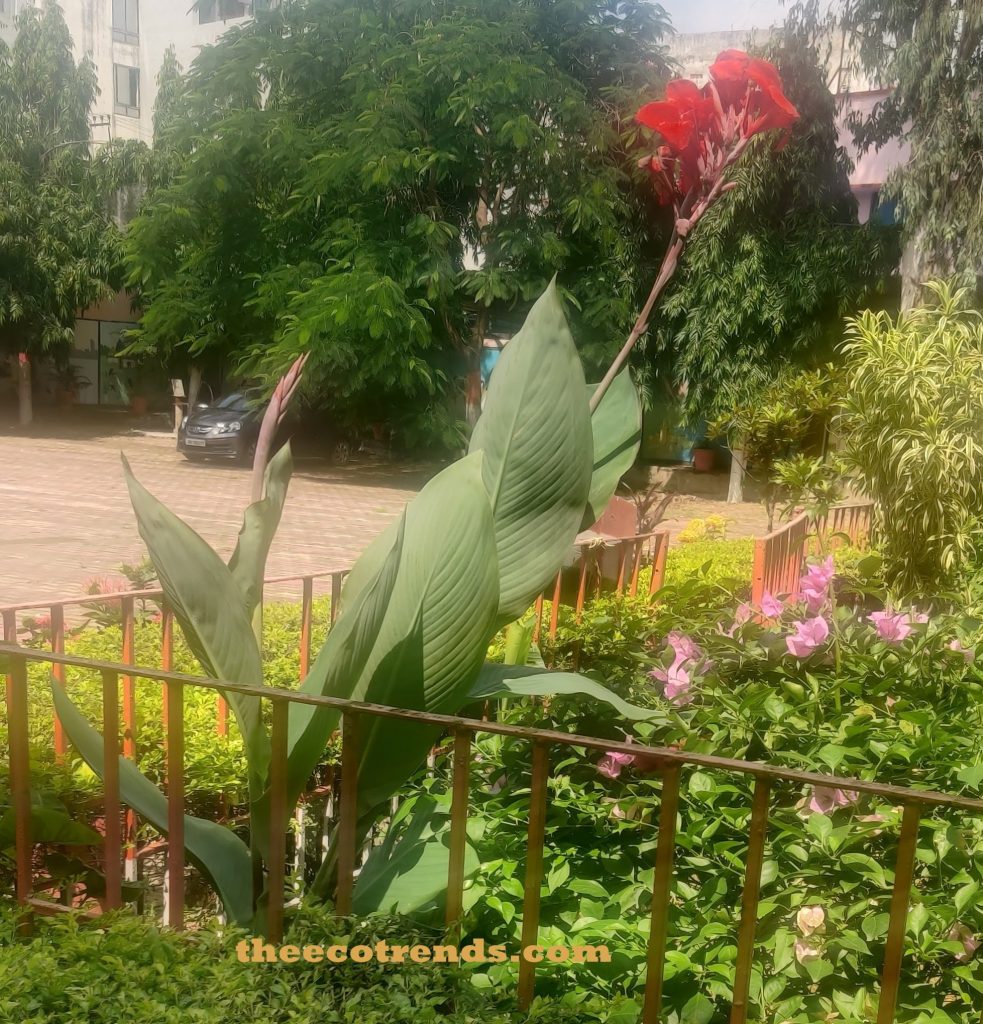Plants don’t have nervous system. They don’t have muscles either. Still, they are observed to have proper control and coordination. How?
In plants, control and coordination are done through the activities of some specific chemical substances known as plant hormones or the Phytohormones.
Hormone is a Greek word which means “stimulant of growth”.
The Phytohormones control and coordinate a number of activities in plants such as growth, flowering of plants, shedding of leaves, formation of seeds, development of roots, and Nastic or non-directional movements or directional movements of plants.
Plant hormones can be defined as chemical substances synthesized and produced in one part of the plant body having a target elsewhere in the same body.
A Phytohormone is an organic substance other than nutrients. This is active in minute quantity. It is formed in certain parts of a plant and is then usually translocated to some other parts or sites. There it evokes physiological, biochemical and / or morphological responses.
Plant hormones are also called as regulators. This is because very small quantity of a plant hormone can bring about astonishing changes in plants. Hormones can coordinate a number of plant activities together.
The Phytohormones have following functions –
(i). Control on growth of roots, stems and leaves,
(ii). Control and coordination of Phototropism, Geotropism, and Nastic movements,
(iii). Control of flowering and ripening of fruits, and
(iv). Control on stomatal movements- opening and closing.
Five major plant hormones that are traditionally described are Auxins, Gibberellins, Cytokinins, and Abscisic acid. In addition, other nutrients and environmental conditions can be characterized as growth factors. The first three plant hormones largely affect plant growth, as described below. Some Phytohormones and their functions are introduced below.
Auxins
It is a group of plant hormones that control directional growth of plants. These are the earliest known plant growth regulators. These hormones were discovered in 1928 by F. W. Went. Chemically, these hormones are Indol Acetic Acid (IAA) and Naphthalene Acetic Acid.
Auxins promote directional growth in plants of normal growth. These promote stem elongation by inhibiting growth of lateral buds. Thus, these hormones maintain apical dominance and induce phototropism.
Auxins are produced in stem buds and root tips. These are widely used in plant propagation and tissue culture. Cuttings are routinely treated with Auxins to induce root formation.
Auxins induce phototropism or growth of shoots towards sunlight. Auxins have important roles in the coiling of tendrils around supports.
Auxins move to darker side of the part of a plant and cause cells of that side to grow larger. These may induce cell division as well. In both of these cases the part of the plant bends.
The repeated bending leads to coiling a tendril around a support. It is due to the activity of Auxins that a stem bends towards sunlight to show Phototropism.
Functions of Auxins
Functions of Auxins are summarized below –
(i). Auxins accelerate the rate of cell division in the apical part of a stem which leads to the growth of a shoot.
(ii). Auxins induce cell-elongation and cell- differentiation.
(iii). Auxins are essential for the growth and formation of callus.
(iv). Auxins are helpful in the development of xylem tissues.
(v). Auxins promote growth of roots in low concentration but it inhibits growth of roots in normal concentration. However, these are widely used for the promotion of rooting on cuttings.

Gibberellins
This is a group of growth hormones which incorporates about 36 hormones. These were first isolated in 1938 by Japanese Scientists T. Yabuta, Sumiki and T. Hayasi.
Scientist Eiichi Kurosawa first time noted the existence of Gibberellins in 1926 in a fungus Gibberella fuzikuroi infected rice plant. Hence, this group of hormones is called as Gibberellins.
These hormones are synthesized in plastids and modified in the endoplasmic reticulum. These hormones are principally found in fungi and few higher plants.
Functions of Gibberellins
Functions of Gibberellins are summarized below –
(i) These hormones promote growth in intact shoot and don’t affect the apical dominance (growth of apical parts of plants).These do not influence the formation and growth of callus.
(ii) These hormones can replace the requirement of long photoperiods in long day plants.
(iii) These hormones help in breaking of dormancy of seeds as these produce hydrolyzing enzymes for the solubilisation of food reserve during the germination of seeds.
(iv)These are helpful in the growth of leaves and fruits.
(v)These are helpful in the development of seedless fruits.
(vi)These hormones check the development of adventitious roots.
Cytokinins
A class of plant growth substances that promote cell division or Cytokinesis in plant roots and shoots is called as Cytokinins. There are two types of Cytokinins
(i)Adenine- type kinetin, zeatin, and 6-benzylaminopurine, and
(ii) Phenylurea type like diphenylurea and thidiazuron (TDZ)
Functions of Cytokinin
Functions of Cytokinin are summarized below –
(i). mitosis
(ii). chloroplast development
(iii). differentiation of the shoot meristem
(iv). stimulating the development of lateral buds and therefore branching
(v). differentiation of the tissues of the root
(vi). leaf formation and delay in the ageing of leaves
(vii).Promote opening of stomata
One of the clearest examples of Cytokinins activity occurs in the germination of seeds. The endosperm of monocot seeds, such as corn (maize), contains large stores of the precursor to the Cytokinins zeatin. When the corn kernel germinates, zeatin moves from the endosperm to the root tip where it stimulates vigorous mitosis.
Abscisic Acid or ABA Hormone
Abscisic acid (ABA) is one of the “classical” plant hormones, i.e. discovered at least 50 years ago, that regulates many aspects of plant growth and development.
In other words, a plant hormone which promotes leaf detachment, induces seed and bud dormancy, and inhibits germination is called as Abscisic Acid or the ABA Hormone.
This hormone was originally believed to cause abscission of leaves and fruits as it are named. It is mainly synthesized in chloroplast but found everywhere in the plant body mainly in leaves, fruits and seeds. It is also known as Abscisin II and Dormin. In contrast to Auxins as it promotes abscission.
Abscisic acid was discovered by F.T. Addicott and his associates in the early 1960s in the process of studying abscission in cotton.
Functions of Abscisic Acid or ABA Hormone
Functions of Abscisic Acid are summarized below –
(i) It is a major player in mediating the adaptation of plant to stress like drought, freezing, and exposure to salt water or salinated soil.
(ii) It protects cells from dehydration in seeds and vegetative tissues.
(iii). It can stimulate root growth in plants that need to increase their ability to extract water from soil.
(iv). It mediates the conversion of the apical meristem into a dormant bud. It enforces dormancy of buds to avoid any unseasonably warm spell.
(v). It is essential for seed maturation in angiosperms. It also enforces a period of seed dormancy.
(vi).It promotes abscission of leaves and fruits in contrast to Auxins that inhibit abscission.




